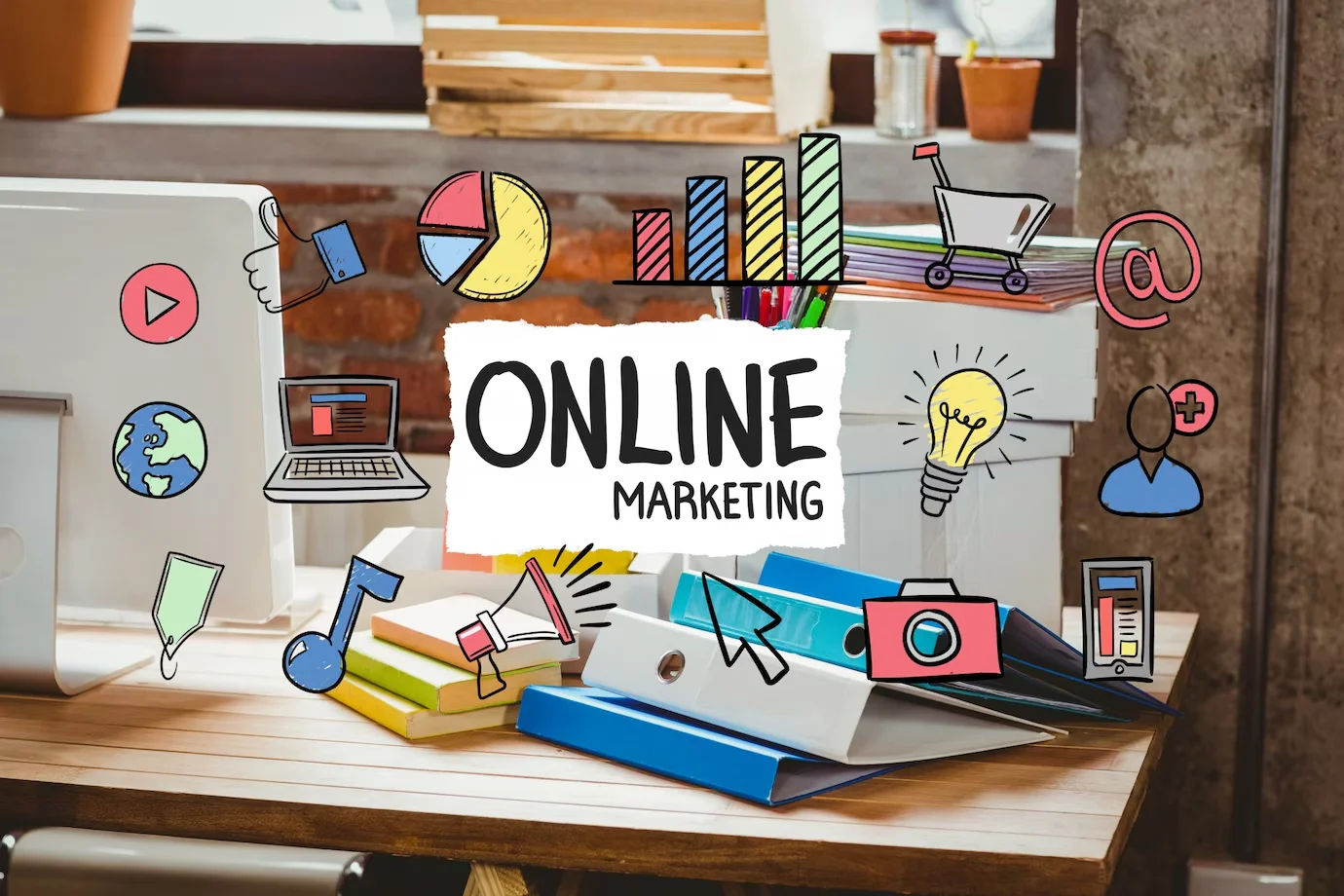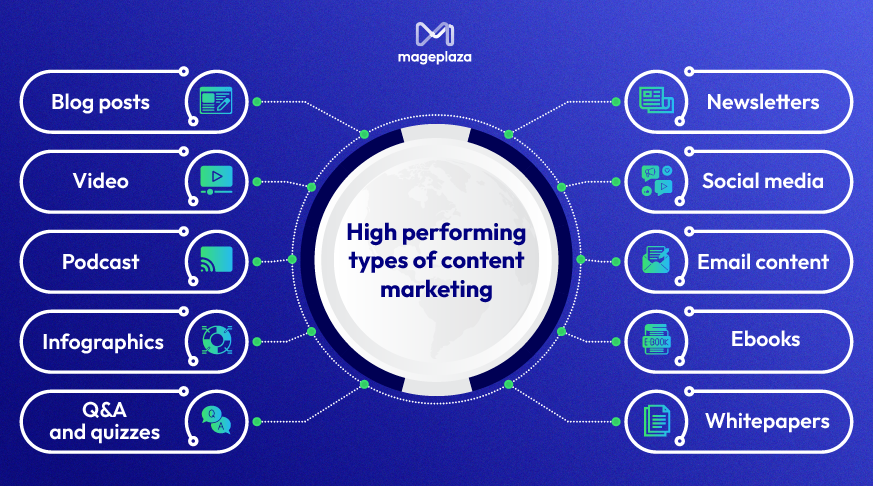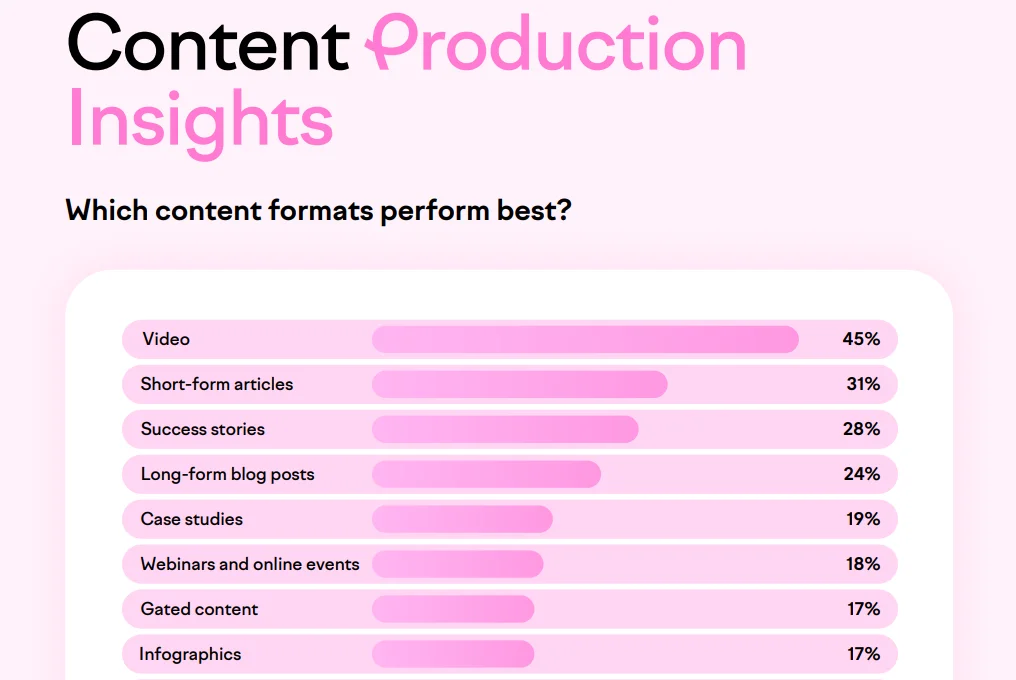15 Types of Digital Marketing - Marketer’s Toolkit for 2025

Digital marketing has rapidly evolved into a critical component of modern business strategies, becoming its own industry with specialized areas and expertise. From personalized campaigns to agencies solely focused on digital efforts, it empowers businesses to connect directly with their target audience. In this blog, we’ll explore the various types of digital marketing and how they can help businesses stay competitive in today’s fast-paced market.
What Is Digital Marketing?

Digital marketing, also known as online marketing, refers to the use of digital channels like websites, apps, social media, search engines, and other online platforms to promote and sell products or services. This modern approach to marketing includes a range of tactics such as email campaigns, text messaging, web-based ads, and multimedia messages. Essentially, any marketing effort that involves digital communication falls under the umbrella of digital marketing.
Unlike traditional marketing, which focuses on broad consumer outreach, digital marketing allows businesses to connect with highly specific audiences. If you’re new to marketing, it’s helpful to first understand the foundational concept of the marketing mix model, which outlines the core elements of any marketing strategy. By leveraging the internet and digital tools, organizations can tailor their messaging to resonate with potential customers, creating more personalized and impactful campaigns.
As Hecate Strategy wisely puts it, “Digital marketing is not the art of selling a product. It is the art of making people buy the product that you sell.” This distinction captures the true essence of digital marketing: not just promoting but compellingly persuading audiences to engage with and invest in what you offer.
Key Traits of a Successful Digital Marketer
To excel as a digital marketer, you need to adapt quickly to change, embrace new technologies, and thrive under pressure and tight deadlines. This dynamic field blends creativity, strategy, and technology to drive results.
Successful digital marketers possess key traits such as:
- Adaptability
- Problem-solving skills
- Curiosity
- Leadership
- Strategic thinking
- Creativity
- Tech-savviness
- Persistence
They are passionate about social media, stay updated on trends, and continuously strive to learn and improve. While digital marketing skills can be learned, having a genuine interest and enthusiasm for the field is essential for success.
15 Types of Digital Marketing
1. Content Marketing

Content marketing focuses on creating useful and informative materials, like blog posts, how-to videos, and guides. This method helps you connect with your target audience, answer their questions, and even drive leads and sales.
To succeed, content should be published consistently and tailored to your audience. By sharing high-quality, reliable info, your business can become a trusted source in your industry. As a result, when your audience is looking for the latest trends and updates, they are more likely to come to you.
| Pros | Cons |
|---|---|
| - Free to use - Flexible for building your brand through engaging content - Support other digital marketing strategies |
- High competition and slow organic ranking - Require consistent, high-quality content to meet customer needs and business goals |
Best practices:
- Try various content types to discover what works best with the target audience
- Integrate content marketing into multi-channel campaigns to boost brand awareness
- Take advantage of tools to generate a wide range of content ideas efficiently
2. Search Engine Marketing
Search engine marketing (SEM) is a strategy to improve your site’s visibility on search engine results pages. It combines both search engine optimization (SEO) and paid advertising.
With SEM, you can improve your website’s organic rankings by optimizing pages for the keywords your audience is searching for. Additionally, you can purchase ads to appear for those keywords directly on the SERPs.
| Pros | Cons |
|---|---|
| - Increase brand visibility - Be cost-efficient compared to PPC (Pay-per-click) |
- Depend on content and technical optimization - Adapt to Google’s changing algorithms - Take time for SEO to deliver results |
Best practices:
- Combine organic and paid SEM strategies to achieve both immediate and long-term results
- Use tools to identify the most effective keywords for your campaigns
- Integrate SEM with other marketing methods to reach customers across multiple platforms
3. Social Media Marketing
It’s a strategy that uses social platforms to connect with and engage your target audience. You can set up a business profile on any social media platform and share posts to promote new products, sales, or recently published content.
Choosing the right platform actually depends on your target audience. According to Sproutsocial, while Instagram and TikTok are ideal for youngsters aged 18-24, Facebook and YouTube are better options for adults with stable incomes aged 25-34.
| Pros | Cons |
|---|---|
| - High conversion rates - Increase efficiency through customers’ likes, comments, and shares - Use targeted ads on Facebook/Instagram to reach specific audiences |
- Need to update new algorithms updates and content formats frequently - Require strategic planning and consistent effort for effective results |
Best practices:
- Select platforms thoughtfully, aligning with your audience’s preferences and habits
- Combine both paid and organic social media strategies
- Focus on creating content that addresses audience needs or entertains, rather than solely promoting products
4. Affiliate Marketing
The fourth type of digital marketing is a strategy where businesses pay affiliates to sell their products on their behalf. While it shares similarities with influencer marketing, affiliate marketing differs in scale. Influencer campaigns are typically customized for specific influencers and their audiences, whereas affiliate programs often involve hundreds or thousands of affiliates promoting products, usually without a close or formal relationship with the business.
| Pros | Cons |
|---|---|
| - Pay only for results - Expand brand reach - Cost-effective with no upfront investment required - Easy to track performance |
- Limited control over how affiliates promote your product or brand - Risk of working with affiliates who use unethical or spammy tactics - Require time to find and manage reliable affiliates - Competition among affiliates can lead to lower commission rates or conflicts |
Best practices:
- Identify affiliates who reach your target audience, such as bloggers or YouTubers with relevant content
- Establish a straightforward commission structure, offering either a flat fee or a percentage based on sales generated
- Use platforms like ShareASale or Awin to manage and track affiliate payments effectively
5. Influencer Marketing
Influencer marketing is when businesses and popular people work together on social channels to promote the brand’s products or services.
These influencers can be celebrities, athletes, or online content creators. Their task is to share and recommend businesses’ products, and in return, the brands will pay them a certain amount of money or give them free products.
Examples of this type of digital marketing are everywhere on social media. It often takes the form of product recommendations or positive reviews. In some cases, it can be a simple mention or tag of the brand, but this should only work with top celebrities with a massive following.

| Pros | Cons |
|---|---|
| - Leverage the influencer’s established audience without building your own. - Gain genuine followers and customers through association with a well-known figure. |
- Your success depends on choosing the right influencer and authentic collaboration. - Growing distrust of influencers requires transparency in paid promotions. |
Best practices:
- Find influencers in your industry and ensure they align with your brand values.
- Set clear goals so that your partners can deliver the right message to their followers.
- Foster strong partnerships by considering influencer feedback and allowing creative freedom to resonate with their audience.
6. Email Marketing
Email marketing is a direct and straightforward communication channel that enables personalized interaction with customers.
It can serve multiple purposes within your overall strategy, such as:
- Welcoming new customers to your brand
- Informing existing customers about new products or promotions to boost sales
- Gathering customer feedback to enhance your offerings
- Sending sales emails to pitch products or services to potential clients
| Pros | Cons |
|---|---|
| - Not affected by changing algorithms like other digital marketing methods. - Maintains constant contact with your audience, building strong relationships and brand recall. |
- Many customers may ignore or not open emails. - Challenging to consistently provide value and avoid unsubscribes. |
Best practices:
- Use CTAs on your website to collect your audience’s email addresses
- Segment your audience to personalize emails and boost engagement
- Experiment with various email campaigns, such as newsletters and promotions, to identify what generates the best results
7. Word of Mouth Marketing
Word-of-mouth marketing is a classic strategy that relies on satisfied customers recommending your products or services.
According to a 2022 Nielsen study, 89% of people trust personal recommendations more than any other marketing channel. Businesses can promote word-of-mouth through initiatives like loyalty programs and referral campaigns, which encourage customers to talk about their brand.
| Pros | Cons |
|---|---|
| - Build trust, as people value recommendations from friends and family - Cost-effective, requiring minimal financial investment compared to other marketing strategies - Generate organic, long-term brand awareness through genuine customer advocacy |
- Difficult to measure and track performance accurately - Rely heavily on customer satisfaction, which can be unpredictable - Limited control over the message shared by customers |
Best practices:
- Select relevant KPIs, such as referral code usage, to track the success of word-of-mouth efforts.
- Motivate shoppers to share your brand with friends and family using approachable, engaging messages.
- Implement a loyalty program that rewards referrals with discounts or free items.
8. Telemarketing
Telemarketing is a traditional marketing approach where salespeople contact potential clients by phone to promote a product or service.
This method includes various formats tailored to different stages of the buying process, such as:
- Cold calling: Reaching out to prospects without prior interaction, often seen as intrusive and with low success rates.
- Inbound calls: Responding to individuals who have shown interest by sharing their contact information, typically with better conversion rates than cold calls.
- Sales calls: Targeting potential or existing customers who have already expressed interest, requiring skilled salespeople to convert leads into buyers. Telemarketing is often conducted on a large scale through call centers but is also used by small businesses. When executed effectively, it can foster relationships with customers, offering a more personal touch than email. However, poor execution can lead to frustration and alienate potential customers.
| Pros | Cons |
|---|---|
| - Enable direct, personalized communication - Generate leads and gather customer feedback quickly |
- Often seen as intrusive and unwelcome - Low success rates, especially for cold calls - Time-intensive and subject to strict regulations |
Best practices:
- Avoid pushing for a sale immediately; prioritize understanding the customer’s needs.
- Offer to call back at a more convenient time if the customer is unavailable.
- Target leads who have expressed significant interest in your products or services for better results.
9. Event Marketing
Event marketing is a classic approach where businesses leverage events to promote their brand, product, or service. While traditionally in-person, virtual events have also become an effective option.
The main goal is to deliver a lasting and impactful brand experience. Companies can organize their own events, participate in trade shows as speakers or exhibitors, or sponsor events to increase visibility.
The bigger the event, the more attention a brand gets. For example, many companies sponsor the Super Bowl each year to become more popular. Since it’s one of the most-watched events in the U.S., appearing during the Super Bowl puts a brand in front of most Americans.
| Pros | Cons |
|---|---|
| - Build strong, memorable brand experiences - Encourage direct engagement with potential customers - Increase brand visibility through event sponsorship or hosting |
- Can be costly, especially for large-scale events - Require significant planning and resources - Limited reach if the event is not well-promoted or attended |
Best practices:
- Consider if hosting, participating in, or speaking at events aligns with your goals
- Experiment with both virtual and in-person events to determine which delivers better results
- Focus on providing meaningful and memorable experiences
10. Chatbot Marketing
Chatbot marketing is installing chatbots to create a friendly customer support system that interacts with customers on websites, social media, and messaging apps. Chatbots help address customer inquiries, share information, and guide users through the sales process. While chatbot marketing has its benefits, its effectiveness depends on how well it aligns with your business objectives and customer needs.
| Pros | Cons |
|---|---|
| - Support 24/7 - Handle multiple queries without extra staff to save cost - Provide instant answers for faster resolutions - Deliver accurate, uniform information |
- Lack of human touch for sensitive issues - Require technical skills to develop - Tech issues might affect user experience - Some users prefer speaking to real people - May struggle with unique queries |
Best practices:
- Continuously analyze user interactions, identify gaps, and improve the chatbot’s performance based on feedback
- Offer an easy option for users to connect with a live agent if the chatbot cannot resolve their issue
- Tailor the chatbot’s tone and responses to match your target audience’s preferences and expectations
11. Pay-Per-Click Advertising (PPC)
Pay-per-click advertising (PPC) is a digital ad strategy which businesses pay an amount of money every time someone clicks on their ad. It’s a powerful method for driving targeted traffic to websites, as advertisers can bid on specific keywords and audience demographics. With measurable outcomes and budget control, PPC is a preferred option for businesses running online advertising campaigns.
| Pros | Cons |
|---|---|
| - Generate immediate traffic and leads - Provides detailed analytics to track performance, conversions, and return on investment - Easily adjust keywords, ad copy, and targeting strategies in real-time |
- Popular keywords can lead to high costs per click, straining budgets - Effective campaigns need regular optimization to avoid wasted spending - Traffic stops once the campaign ends, unlike organic methods that build over time |
Best practices:
- Identify high-performing keywords relevant to your target audience
- Define clear objectives like brand awareness, lead generation, or sales to shape your campaign
- Write attention-grabbing headlines and descriptions that resonate with your audience
- Exclude irrelevant keywords to prevent wasting the budget on unqualified clicks
- Ensure landing pages are relevant, user-friendly, and designed to convert traffic into leads or sales
- Analyze campaign performance and refine targeting, bids, or keywords as needed
12. Online PR and Reputation Management
This means managing a company’s online image by handling social media, responding to customer feedback, and creating a positive reputation. A good online PR strategy builds trust, boosts credibility, and reduces the impact of bad reviews or issues.
| Pros | Cons |
|---|---|
| - Positive mentions boost brand recognition - Quickly addresses crisis |
- Regular monitoring and responding to feedback require ongoing effort and resources - Negative reviews or poor handling of feedback can harm your reputation |
Best practices:
- Respond Quickly: Address feedback, whether positive or negative, in a timely and professional manner.
- Encourage Positive Reviews: Ask satisfied customers to share their experiences to build a strong online reputation.
- Be Transparent: Acknowledge mistakes and show genuine efforts to resolve issues.
- Engage Proactively: Share valuable content and interact with your audience to foster goodwill and trust.
13. Video Marketing
Video marketing involves creating engaging videos to promote or inform audiences about your products or services. These can range from long-form tutorials on platforms like YouTube to short, snappy clips on TikTok showcasing key features.
Research shows that 45% of people find video content to be the most effective format, and 82% of viewers have been convinced to make a purchase after watching a video.

To begin your video marketing strategy, start with simple keyword research to understand what topics people are searching for on the platforms where you plan to share your content.
| Pros | Cons |
|---|---|
| - Capture attention and leave a lasting impression on viewers - Often drives more purchases compared to other formats - Boost SEO rankings and traffic effectively |
- May cost a lot to produce videos - Planning, filming, and editing videos can take considerable time - Viewers may quickly skip videos if not captivating within the first few seconds |
Best practices:
- Experiment with both short and long videos on different platforms
- Combine video content with other social strategies to maximize engagement and expand your audience
- Optimize your YouTube videos with SEO strategies to improve organic visibility and attract more viewers
14. Instant Message Marketing
This marketing approach uses messaging apps like WhatsApp, Facebook Messenger, and Slack to engage with customers instantly. Companies can leverage these platforms to offer support, share promotions, and have tailored conversations. Instant messaging marketing enables direct, real-time interaction, improving customer satisfaction and boosting sales.
| Pros | Cons |
|---|---|
| - Enable businesses to connect with customers instantly - Facilitate tailored messaging to specific customer needs - Higher open and response rates |
- Heavily rely on third-party apps - Difficult to handle many personalized interactions at the same time |
Best practices:
- Obtain Consent: Always get permission before sending messages to avoid appearing intrusive or spammy.
- Segment Your Audience: Group customers based on preferences or behaviors for more targeted and relevant messages.
- Keep Messages Clear and Concise: Ensure your communication is straightforward and easy to understand.
- Leverage Automation Wisely: Use chatbots for routine inquiries while maintaining the option for human interaction for complex issues.
- Engage During Optimal Times: Schedule messages when customers are most likely to respond or take action.
- Monitor Performance: Track metrics like response rates and customer feedback to refine your strategy.
- Follow Privacy Guidelines: Comply with regulations like GDPR or CAN-SPAM to protect customer data and build trust.
15. Virtual Reality Marketing
This type of marketing uses virtual reality (VR) to create exciting and interactive experiences for customers. By letting customers “step inside” a virtual world, businesses can show off their products in a really cool and memorable way. This works especially well for things like games, real estate, and tourism, where seeing and experiencing things firsthand can make a big difference.
| Pros | Cons |
|---|---|
| - Immersive experiences - Enhanced brand recall - Allow for more realistic product interactions - Differentiates your brand from competitors |
- Expensive to develop and implement - Not all audiences have VR devices to access - Some users may experience discomfort |
Best practices:
- Invest in high-quality VR content that is engaging, immersive, and relevant to your brand
- Ensure the VR experience is user-friendly, accessible, and comfortable for all users
- Keep up-to-date with the latest VR technologies and best practices in VR marketing
Conclusion
There’s no one-size-fits-all answer when it comes to digital marketing strategies. Different stages of a business need different approaches. For instance, when a startup is looking to boost brand awareness, SEM, influencer, and social media are typically the go-to options. However, once you’ve established a steady stream of traffic, email marketing becomes a powerful tool for fostering brand loyalty. In short, marketing is about driving sales, so every strategy should be customer-centric. Marketers should keep learning and adapting to new techniques to ensure their campaigns are effective.





![Top 20+ Must-have Shopify Apps for 2025 [Free & Paid] - Mageplaza](https://cdn2.mageplaza.com/media/blog/must-have-shopify-apps/top-must-have-shopify-apps.png)
![[2025 Updates] Top 10+ Upsell Apps for Shopify - Mageplaza](https://cdn2.mageplaza.com/media/blog/best-upsell-shopify-app/cover.png)